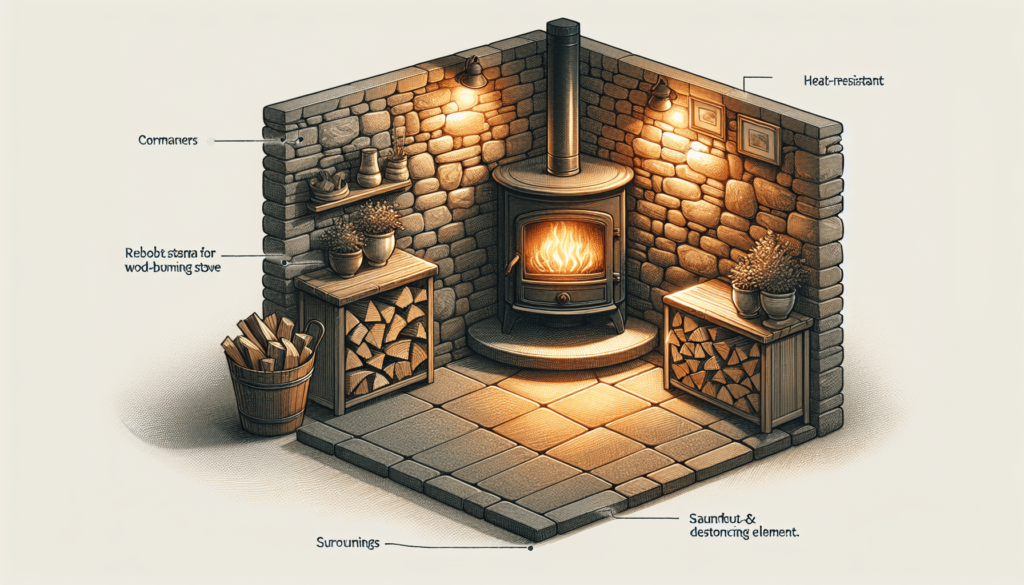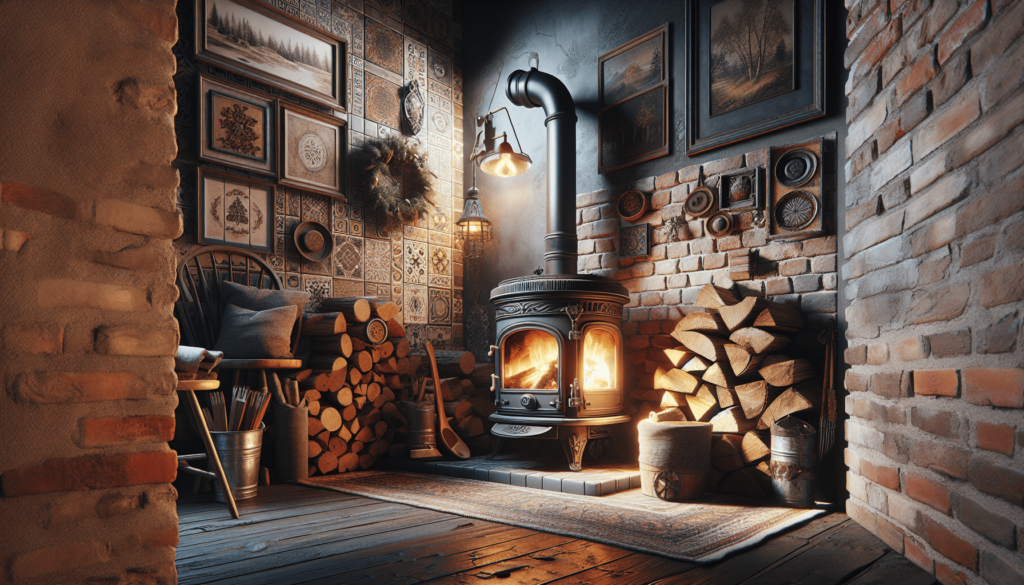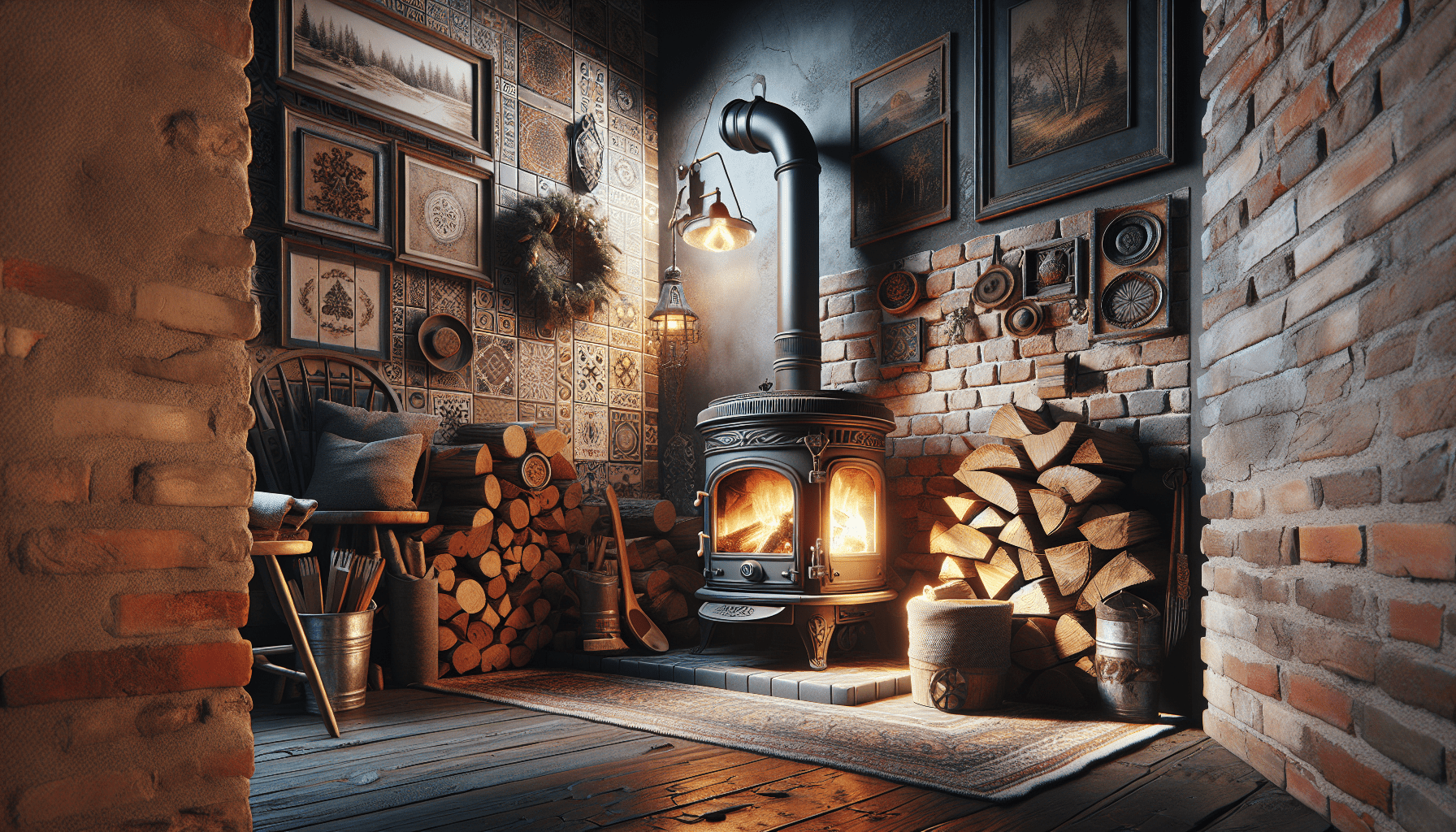What makes you consider remodeling or enhancing the area behind your wood burning stove? Is it aesthetics, safety, or just a mix of curiosity and practicality? In my experience, setting up the perfect environment around a wood burning stove is like orchestrating a delightful symphony, where each element plays its part in creating warmth, coziness, and safety. Let’s explore the nitty-gritty details of what you truly need behind your wood burning stove to make it both functional and visually appealing.

The Role of a Heat Shield
Understanding Heat Shields
When I first installed a wood burning stove in my space, heat shields quickly became a hot topic of discussion—pun absolutely intended. Heat shields are a crucial component, designed to protect the walls behind your stove from the intense heat it emits. They work by acting as a barrier, preventing heat from directly impacting and potentially damaging the wall.
Materials for Heat Shields
So, what are these heat shields made of, you ask? Common materials include metal, tile, or fire-rated drywall. Each offers varying degrees of protection and aesthetic appeal. Metal, for instance, is often chosen for its industrial look and excellent heat reflection properties. Tiles, on the other hand, provide an opportunity to add a splash of color or pattern, showcasing one’s personal style while also being resistant to heat.
Clearance Requirements
The Importance of Adequate Clearance
Now, let’s talk about clearance, because the last thing I want is to rearrange my furniture just to accommodate my new heating buddy. Clearance refers to the space around the stove that needs to be free of any combustible materials to prevent fires. It’s important to adhere to the manufacturer’s guidelines, as clearance requirements can vary based on the stove model.
How Much Space is Enough?
Based on research and my own installation experiences, a typical clearance might require anywhere from 6 to 36 inches, depending on the sides and back of the stove. Trust me, those inches matter, just like when deciding whether your favorite armchair can fit in your nook.
| Area | Recommended Clearance |
|---|---|
| Sides | 12 to 36 inches |
| Back | 6 to 18 inches |
| Front | 18 inches |
Wall Material Safety
Selecting Non-Combustible Materials
If you’re like me and enjoy not worrying about your walls catching fire, then choosing non-combustible materials is a wise move. The goal here is to select materials that can withstand high temperatures, thus preventing potential hazards. Some suitable options include brick, stone, and tile. Each offers not only safety but also a unique charm to the space.
Why Non-Combustible is Essential
Factor in that non-combustible materials don’t just sit there looking pretty; they actively work to reduce the risks of fire-related incidents. Not to get too technical, but these materials have a fire resistance rating that measures their ability to hold up against heat without igniting.
Enhancing Aesthetics
Using Tiles and Stone
Styling the space behind my stove was in some ways as satisfying as the warmth it provided. For a sleek and enduring finish, tiles or stones are fantastic choices. They offer a multitude of design possibilities from rustic to classy. Personally, the encaustic tiles stole my heart, adding both texture and color.
Bringing in a Rustic Charm with Wood
But wait, doesn’t wood combust? Absolutely, and it seems contrary, yet when used appropriately—such as in decorative wall panels not directly behind the stove—wood can introduce a rustic elegance to the room. To safely include wood, ensure it’s placed well outside the clearance zone, far away from any direct heat contact.

Necessary Flooring Considerations
Selecting the Right Hearth
Ah, the hearth! It’s not only vital for catching stray embers but also ties the stove with the room. When I was selecting mine, I played Goldilocks with materials, choosing from slate, marble, or concrete. Each offered a different flair yet functionally protected the floor.
Materials for Hearth Construction
Concrete drew me in with its durability, but slate, with its variety of shades, can elevate the visual appeal. Either way, the hearth extends at least 18 inches in front of and 8 to 12 inches to the sides of the stove, according to most recommendations, which fits perfectly in snug spaces.
Installing a Proper Ventilation System
Ensuring Air Circulation
I can’t emphasize enough the importance of coordinating the air circulation effectively when you’re dealing with a wood burning stove. A well-designed ventilation system not only assists in drawing smoke and combustion gasses out but ensures that the heat circulates evenly and efficiently throughout the room, creating that cozy bubble we all aim for.
Vent Types and Configurations
Chimney and flue are terms you’ll undoubtedly hear. While both are avenues for heat and smoke escape, the key is to install the proper configuration tailored to your living space. A straight vertical chimney is ideal for its natural draft efficiency but doesn’t rule out directional flues if your layout calls for flexibility.
Fire Safety Features
Installing Smoke and Carbon Monoxide Detectors
Peace of mind can be achieved with vigilant fire safety measures. If yours are as outdated as a rotary phone, it’s time for an upgrade. Position smoke detectors near the stove but not too close to avoid false alarms caused by regular stove use. Trust me, getting out of bed for a false alarm isn’t exactly on my wish list.
Using a Fire Extinguisher
Let’s think of a fire extinguisher as an insurance policy for your stove’s surroundings—a bit of reassurance if things go south. Keep it nearby but not in a high-traffic area. Easy access without being an obstacle is the sweet spot.
Regular Maintenance is Key
Routine Cleaning and Inspection
I learned quickly that maintaining a wood burning stove is as important as its initial setup. It’s like a passionate relationship; you need to attend to it regularly. A monthly cleaning and a professional yearly inspection will help keep it running efficiently and safely. Plus, there’s nothing like sitting down with a clean stove and a good book in the middle of winter.
Dealing with Creosote
Creosote, the villain of the story, lurks within your flue system like an uninvited guest who never leaves. Regular cleaning helps prevent its buildup, diminishing the risk of chimney fires. Just be proactive about it—because as much as I enjoy the simplicity of a wood stove, dealing with chimney fires isn’t on my to-do list.
Conclusion: My Personal Stove Story
Every interaction I’ve had with my stove has been a blend of coziness and responsibility—a dance of warmth and caution that ultimately makes wintertime bearable. By implementing these thoughtful considerations and measures, the space behind your wood burning stove will not only become safe but an integral part of your home’s aesthetic and functional design. Whether you are a connoisseur of rustic elegance or a minimalist by heart, making these smart choices will enrich your living space as much as it has mine.
So, what do you truly need behind a wood burning stove? It’s a web of safety, aesthetics, and practicality all knitted into one warm, inviting nook for countless cold evenings ahead. Imagine lighting that first winter fire, knowing every component behind it isn’t just functional, but a true reflection of your style and priority for safety. That’s the beauty of having a well-thought-out area around your stove.

